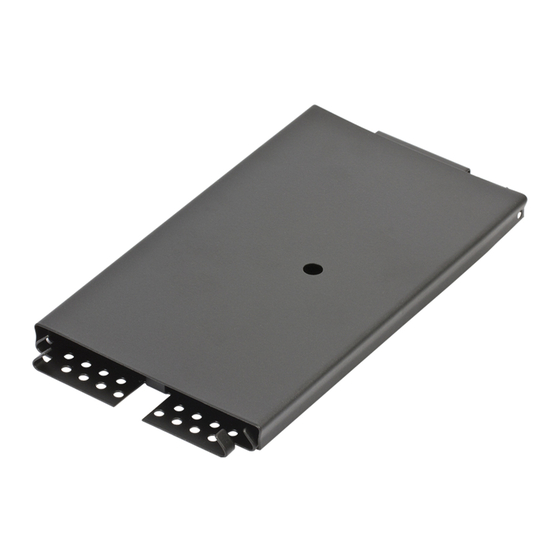CORNING OSE-ST-2 Handbuch - Seite 4
Blättern Sie online oder laden Sie pdf Handbuch für Gehege CORNING OSE-ST-2 herunter. CORNING OSE-ST-2 8 Seiten. Splice trays

Step 2:
Use the inner tab on the splice tray first. Position the buffer
tube approximately 1 cm (3/8 in) beyond the tab (Figure 4).
Crimp the buffer tube under the tab using the crimp tool.
IMPORTANT:
Do not crush the buffer tubes.
7.
Securing Tight Buffered Cable
Secure tight buffered cables using cable ties threaded through
holes in the tray (Figure 5).
IMPORTANT:
Multiple pigtails may be secured with a single
cable tie. Wrap 1.5 in of vinyl tape around the
pigtails as protection. Position cable tie buckles
inside the tray and to one side of the cable
bundle to avoid interference with the cover
(Figure 6).
8.
Securing Ribbon Fibers
Step 1:
Orient the buffer tube/transport tubing
with the ribbons on edge and the aqua
(#12) fiber facing upward.
IMPORTANT:
Verify that the ribbons are placed in
the vertical plane and are not lying
flat in the tray. To prevent damage
to the ribbon fibers, they must be
routed without twisting the fiber.
Avoid crossing the ribbons over
each other.
NOTE: A ribbon strain-relief kit is required to secure and transition ribbon fibers without tubing to the splice tray
(Figure 7). This kit is provided with the OSE-ST-3 splice tray. Follow the instructions in the kit.
Step 2:
Secure ribbon buffer tubes using cable ties threaded through holes in the tray (Figure 7).
Crimp inner tab first
TPA-4947
Buffer tube or
tight-buffered cable
TPA-2992
Pigtail
TPA-4949
Ribbon fiber
Split grommet
TPA-2990
Standard Recommended Procedure 001-285 | Issue 4 | February 2017 | Page 4 of 8
Buffer tube 3/8-in
beyond crimp tab
Cable tie
(buckle to one side)
Lip
Cable tie
(buckle to one side)
Lip
Figure 4
Figure 5
Figure 6
Figure 7
